

Andrew Rosenthal, Morgan Sarao, Briana Leone, James Adams, Ali Kenner,. "October Research Brief - November 15th 2020" Energy in COVID-19. The Energy Vulnerability Project. Platform for Experimental and Collaborative EthnographyJ Retrieved from http://housingenergy.info/content/energy-covid-19-october-research-brief...
COVID-19 has altered energy use and consumption across energy landscapes. Studies exploring these changes are showing that industrial and commercial sectors in the United States are consuming significantly less energy, while residential energy use has increased. As winter approaches in the United States, energy consumption in the residential sector may see even more significant increases, as individuals will be indoors for extended periods of time and will be turning on their home heating systems in many regions of the country. Energy systems and the infrastructures supporting them perpetuate systemic inequity;the lack of adequate assistance and resources to support households facing amplified and overlapping burdens due to the pandemic means that anticipated increase in household energy consumption will disproportionately burden vulnerable households. The articles below highlight changing energy use due to COVID-19, and also offer insight as to how households can lower their energy bills despite increasing household energy consumption through weatherization techniques and energy assistance in Philadelphia.
The article titled How Covid-19 Has Changed The Way Americans Use Energy discusses the ways in which COVID-19 has affected energy expenditures. Overall, energy consumption has decreased 4% from the same time last year (Conca, 2021). However, Conca more deeply analyzes the effects lockdown measures have had on said energy expenditures. Citing the study conducted by Diana Sabau, Conca notes differences in energy landscapes across the fifty states. Both the commercial and the industrial sectors reported significant drops in energy, 11% and 9% respectively, mainly attributable to social-distancing measures taken to fight COVID-19 (Conca, 2021). However, where the commercial and industrial had drops in energy use, the residential sector saw more than significant increases, in some states like Arizona and Michigan even increasing by 21%. Dramatic increases in household energy consumption can only mean the price of said increase is disproportionately burdening energy vulnerable households, where individuals are staying home more and do not have adequate resources to pay for increased consumption.
The article goes on to highlight Hawaii's drop in energy consumption in the hospitality sector by 21% , given the lack of tourism. A major takeaway from this article is the redistribution of energy expenditures, which should call for better analyses of the impacts of the pandemic and could, perhaps, spark conversations on energy bill coverage as part of employee contracts since many may move to remote settings permanently. This article, and the general energy bill difficulties faced by many Americans, could also spark conversations about energy rights and energy assistance (Conca, 2021).
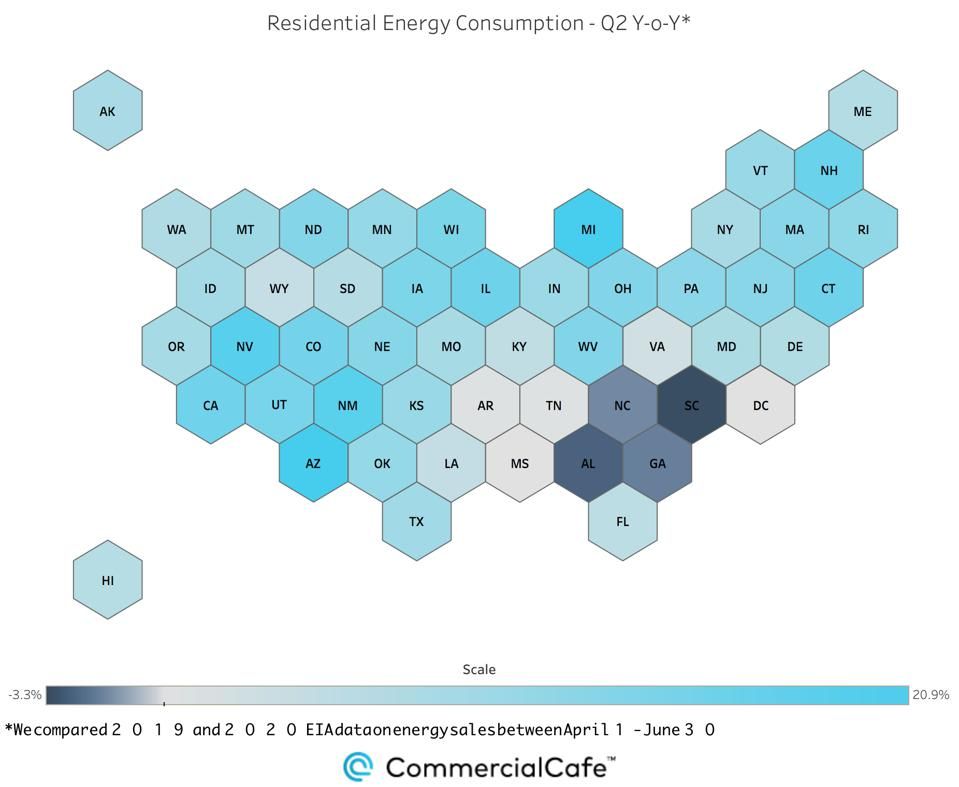
Conca, James (2020, Oct 28) "Total Energy Consumption By State" Forbes https://imageio.forbes.com/specials-images/imageserve/5f98d7515ea7a0aef8...
The next article on how COVID is impacting energy use is simply titled How to Lower Your Energy Bills by Nick Vadala. Since many people are changing their behavior during COVID-19 to reduce their energy consumption, the article opens by stating that the combination of colder weather and COVID-19 will require people to warm their homes while using less energy (Valda 2020). As many other articles here state, energy consumption during COVID-19 has decreased, and many are finding themselves unable to pay their utility bills. To make matters worse, many moritoriums are coming to an end while the temperatures get colder.
The article says that the best way to keep your energy costs low is to weatherize your home (Valda 2020). Whether articles similar to this one will lead to increased rates of weatherization is dubious, but interesting to document greater coverage of weatherization practices. However, weatherization practices are expensive. As such, the article points to programs that allow you to weatherize households cheaply, if not for free. The article also points out power company offered programs, such as PECO’s $25 energy audit that can find areas to save money in your home (Valda 2020). The article then lists basic measures you can take to save energy: block any air gaps, add insulation, turn the heat down to 68, and don’t replace your windows. An in depth study onto changes in conservation and rates of weatherization during COVID-19 could yield fascinating results.
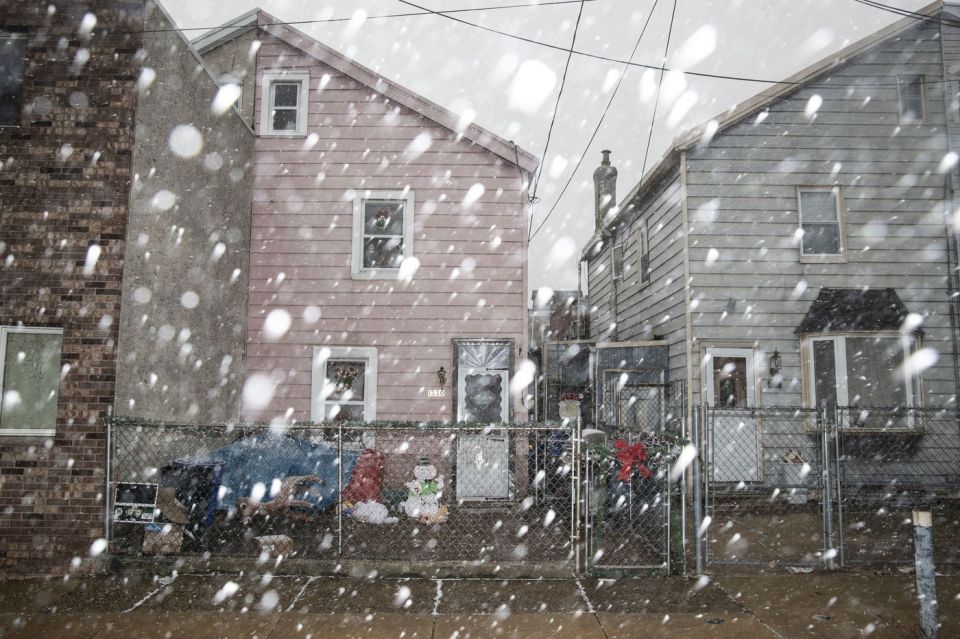
Henderson, M (Oct 13, 2020) "How To Lower Your Utility Bills" The Philadelphia Inquirer
Conca, J. (2020, October 28). How Covid-19 Has Changed The Way Americans Use Energy. Forbes. Retrieved from https://www.forbes.com/sites/jamesconca/2020/10/28/the-coronavirus-uneve...
Vadala, Nick. "How to lower your energy bills." The Philadelphia Inquirer. October 13, 2020. https://www.inquirer.com/real-estate/housing/utility-bills-heating-cooli...
The majority of these articles focus on access to not only energy, but energy jobs and ownership. Many focus on how not having access to energy prevents growth in communities or indivudals. Articles also discuss the responses by companies to these issues, and their attempts to remedy those issues. Articles focus on racial inequality, the digital divide, power consumption, and state spending.
This section discusses how COVID-19 may exacerbate already existing or create new inequalities of access to utilities. For example, inequality of access to the internet as seen in rural areas may be made worse by the pandemic as classes move online and medical appointments must be made over the internet. Or how the remaining $1.3 billion in the CARES act could be allocated in a way that further makes some energy vulnerable groups unable to access utilities. The incoming end to moratoriums will also accelerate the housing insecurity of tens of thousands of Pennsylvania residents as one article in this section discusses.
The first article tackling the next subject on access to energy is titled Hughes: It’s ‘a crime to have $1.3B sitting around’; Ahead of budget debate, Senate Dems release plan for unspent CARES cash by Kenny Cooper. Pennsylvania Senate Democrats have released their plans on how to spend the rest of the $1.3 billion COVID relief fund money, which would include stimulus to hospitals, small businesses, higher education, public safety workers, utilities, child care, food security, and hazard pay. Pennsylvania has spent half of the $3.6 billion they received as part of the CARES act. Below is a pie chart created to show how Pennsylvania plans to spend the remaining $1.3 billion. On electricity, Hughes states, “Utilities don’t stop. Electricity doesn’t stop. Your water bill doesn’t stop. Your heating bill doesn't stop. None of those come to an end in this crisis. And in some circumstances, because folks are home so much, those bills have gone up,” Hughes said. “We need to provide assistance for folks to give them some relief in that space.” (Cooper, 2020).
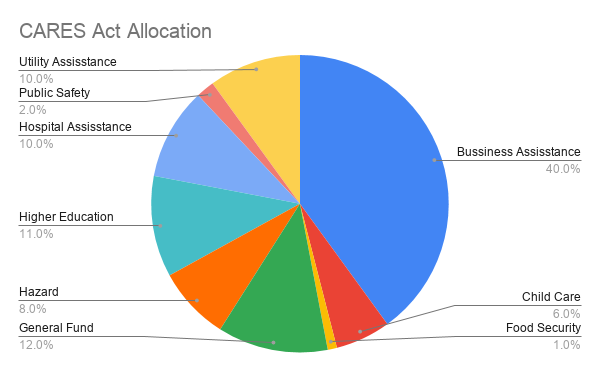
Allocation of the remaining CARES Act funds in the state of Pennsylvania
SOURCE: Data from Cooper, Kenny, Pie Chart created by Rosenthal, Andrew
The next article is titled Unpaid Pa. Utility Bills Soar 68% in the Pandemic and Thousands Face Shutoffs Next Month by Andrew Maykuth. This article documents the end of the utility shut offs suspension in Pennsylvania, which will take place on November 9, 2020. The article translates to roughly 1 million Pennsylvanians who, according to the article “About 146,000 PECO electric and gas customers and 156,000 Philadelphia Gas Works customers have unpaid bills totaling about $221 million, or more than $730 per account. The PECO customers, which include some small commercial and industrial accounts, owe $135.6 million, up 150% from a year ago. PGW customers owe $85.3 million, nearly double the unpaid bills of a year ago” (Maykuth, 2020). Utilities have said that the moratorium, which was enacted in March, has not led to an increase in payment plan applications, but has instead led to an increase of unpaid bills. Advocates of extending the moratorium use this fact as evidence of the widespread economic devastation caused by the pandemic and are calling for the moratorium to continue while also calling for the PUC to incentive entrance into payment plans. New Jersey was set to end their moratorium as well, but Governor Phil Murphy reversed the decision at the last minute until March 15th, 2021. This article shows how people aren’t applying for payment plans, the cause of which is unknown as many companies have not released information on how many of their customers are low income.
Another article to consider, is titled Utilities Can Soon Cut Off Non Paying Customers, Pa. Says, But The Poorest Customers Are Protected. The Pennsylvania Public Utilities Commission (PUC) voted 3-1 to terminate the shutoffs but put safeguards in place to protect the most vulnerable. According to the article, “The PUC’s order will still prohibit utilities from shutting off “protected customers” whose income is no more than triple the Federal Poverty Guidelines, which are set at $26,200 for a family of four, with the yearly limit for such a family would be $78,600. The protected customers must apply for available assistance programs and request a payment arrangement from the utility to pay down their debt” (Maykuth, 2020).
The next article on energy access is titled In An Effort To Increase Solar Use in Homes, Philly Cuts Red-Tape and Cost for Installers. Philadelphia officials have streamlined the permitting process for home solar installers in Philadelphia. Installers can apply for an EZ Permit for Solar online through the Department of Licenses and Inspections for systems with 10 kilowatts of capacity or less, which should fit most home installations. The process no longer requires installers to submit detailed electrical plans, which used to add considerable time and cost. In addition, solar permit applications made online will be reviewed within three business days, saving weeks, if not months, in the process. Those submitted in person will be reviewed the same day (Kummer 2020).
The red tape surrounding the solar permitting process previously deterred some solar installation companies from working within city limits. Ideally this streamlined process will increase the number of solar contractors who are willing to work in Philly, subsequently increasing the number of solar installations.The end of the article mentioned how Solarize Philly has been impacted by COVID-19, which includes the City of Philadelphia eliminating funding for the rebate offered to residents for solar installation through Solarize Philly. Homeowners and small businesses can still qualify for a separate $250 discount on a system through November 30. Although the City of Philadelphia is taking steps to increase the number of residents and businesses transitioning to solar in order to meet their climate goals, the eliminated solar installation funding for rebates, which incentivized residents who may not have been able to, to invest in solar, will likely reduce the amount of solar installations this fiscal year. Additionally, this divestment will likely reduce the number of energy vulnerable households that are able to obtain solar, reinforcing an inequitable transition to clean energy. The foregoing shows the intersection between inequality in access and ability to access energy.
The last article of this section is titled Poor Internet Service a Deterrent to Rural Living, Survey Finds by Jason Nark. Internet access in rural Pennsylvania is critically lacking, as shown in artifacts documented in previous research briefs. The rural urban divide in internet access and speeds in Pennsylvania may be the most extreme in the country;some households in rural Pennsylvania are not able to stream videos, for example.The current article discusses how this has prevented many from moving into rural areas, further harming their growth. A study titled"Survey by Satellite internet found that 36% of respondents said it was preventing them from relocating there. A majority — 67% — said internet service would affect their decision to move somewhere more rural" (Nark, 2020).
It seems there are measures to help fix the digital divide between urban and rural environments, but none have passed. The article also claims that such a digital divide might be the most bipartisan issue for Pennsylvania, with both Democrats and Republicans on board. This has been an issue for a long time, it's clear the pandemic is causing this sense of urgency, but this still makes me wonder why nothing has been done yet for the rural parts of Philly. As mentioned in another artifact, the community had come together and created a co-operative to bring the internet to rural Pennsylvania.
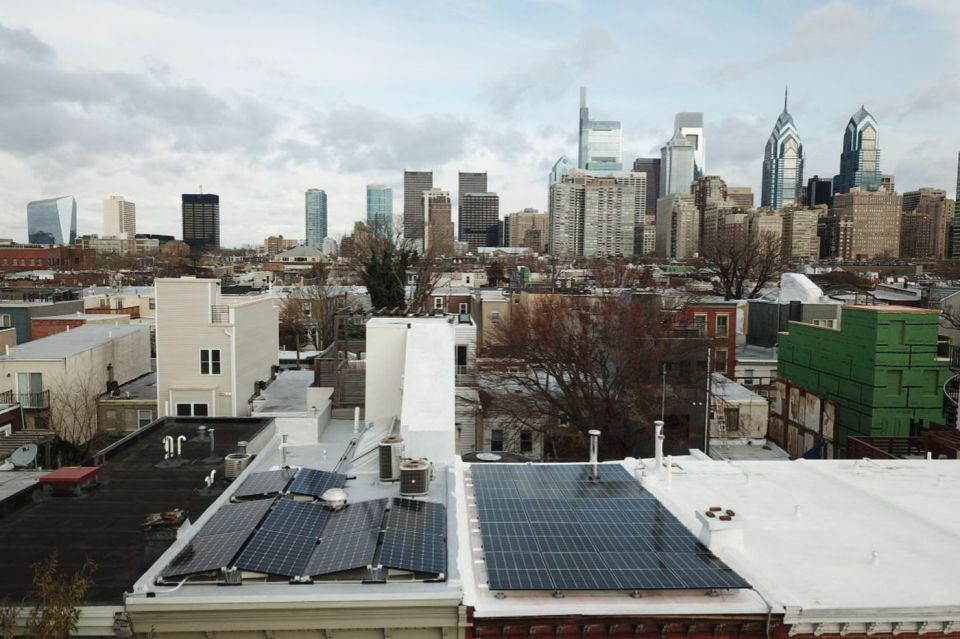
Kummer F (2020, Oct 15) "In an Effort to Increase Solar Use in Homes, Philly Cuts Red-Tape and Costs for Installers" The Philadelphia Inquirer
Cooper, Kenny. "Hughes: It’s ‘a crime to have $1.3B sitting around’; Ahead of budget debate, Senate Dems release plan for unspent CARES cash." Pennsylvania Capital Star. October 16, 2020. https://www.penncapital-star.com/covid-19/hughes-its-a-crime-to-have-1-3...
Maykuth, Andrew. "Unpaid PA Utility Bills Soar 68% in the Pandemic, and Thousands Face Shutoffs Next Month." Philadelphia Inquirer, October 16, 2020. https://www.inquirer.com/business/energy/pennsylvania-nj-unpaid-utility-...
Maykuth, Andrew. "Utilities can soon cut off nonpaying customers, Pa. says, but the poorest customers are protected." Philadelphia Inquirer, October 8, 2020. https://www.inquirer.com/business/pennsylvania-pa-utilities-shutoff-ban-...
Kummer, F. (2020, October 14). In an effort to increase solar use in homes, Philly cuts red-tape and cost for installers. Retrieved October 15, 2020, from https://www.inquirer.com/science/climate/philadelphia-solar-climate-chan...
Nark, J. (2020, October 30). Poor internet service a deterrent to rural living, survey finds. Retrieved from https://www.inquirer.com/news/internet-service-rural-pennsylvania-real-e...
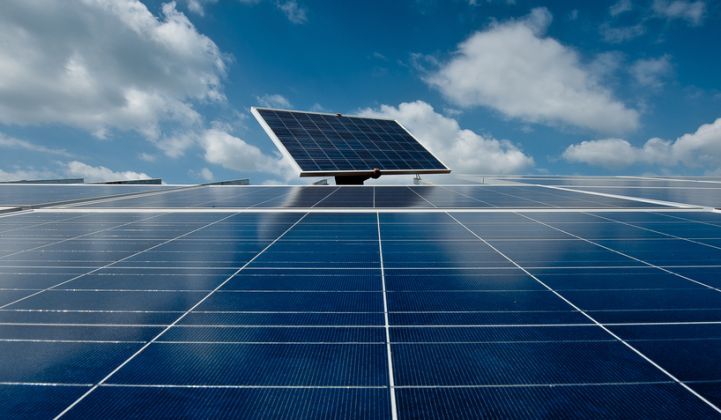
Merchant E, (2020, Oct 29) "What is Clean Energy Doing to Confront Racism" Green Tech Media https://assets.greentechmedia.com/assets/content/cache/made/assets/conte...
This section will discuss how access to utilities during COVID-19 has changed or expanded in some ways. It also discusses the implications of these plans and calls to extend them beyond the pandemic. It discusses plans by utility companies to combat systemic racism in order to make the transition to green energy a more just one as well as the plans different states and municipalities have put in place to give free internet access to vulnerable families. An interesting omission in these articles is a lack of community owned energy and how it could allow for much more just access to utilizes.
Before discussing this theme, something that the previous research briefs have omitted pertains to what exactly is meant by “during COVID-19.” While no one would dispute the fact COVID-19 has caused the largest shift in human daily activity in our lifetime, there have still been other flashpoints that will yield permanent impacts to the country. The first article this section will discussm, titled What is the Clean Energy Industry Doing to Confront Racism, written by Emma Merchant, involves the protests following the murders of George Floyd and Breonna Taylor. In response, companies in the clean energy industry have been taking an inward look at their policies and practices and subsequent role in perpetuating racism and racial disparities.
The fact that clean energy companies can easily portray themselves as morally superior to fossil fuel companies often allows them to brush aside aspects of their conduct that can perpetuate racial disparities. For example, these companies have taken a "rising tide lifts all boats" approach, believing that working to clean the grid anywhere will result in a trickle down effect towards communities of color who are more likely to experience negative impacts from pollution. What the data suggests, however, is that these companies still fall short in other areas, such as the number of opportunities for Black employees in the industry and the availability of rooftop solar to majority-nonwhite neighborhoods.
The industry interventions that are needed in order to confront systemic racism include diversifying the clean energy workforce (and not just entry level jobs in the industry), breaking away from the monopoly utility business model, which has led to fewer than 20 states allowing community solar, and aggressively and proactively advocating for clean energy on a local, state, and federal level. Jacqui Patterson, director of the NAACP’s Environmental and Climate Justice Program, has stated that green energy companies need to see the “social good” that comes from fighting racial injustice.
Certain clean energy structures, such as community solar and community-owned microgrids, are inherently indicative of the promise of a more equitable industry. For now, though, many of those projects rely on supportive state-level policy, mission-driven organizations or one-off charitable contributions. The kind of policies that make those projects sustainable — such as local Solar for All initiatives and community solar that incentivizes low-income participation — need to be expanded, which will require lobbying effort.
Different companies are taking different approaches to combating racial injustice, with some releasing specific commitments. “This fall, the New York Power Authority (NYPA), a state public power organization, presented its board with 10 racial justice commitments it developed with the American Association of Blacks in Energy (AABE). A more detailed plan will be discussed at NYPA's December board meeting” (Merchant, 2020). Earlier in October, a group of energy companies including Sol Systems and Cypress Creek Renewables founded Renewables Forward, “pledging to create a diversity and inclusion toolkit for the industry anddonating $200,000 divided between the NAACP, the National Urban League and the Southern Poverty Law Center” (Merchant, 2020). All that is left to be seen is if these companies live up to their expectations. Accountability is a key factor to the success of any new industry.
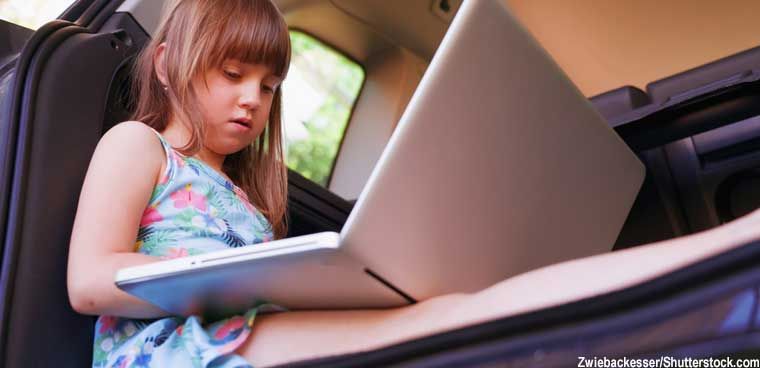
Cantú A (2020, Oct 27) "Initatives to Close Digital Divide Must Last Beyond the COVID-19 Pandemic to Work" Green Tech Media https://energyrights.info/node/867
The next article, titled Initiatives to Close The Digital Divide Must Last Beyond The COVID-19 Pandemic to Work by D. Antonio Cantù, discusses inequality of access to utilities during COVID-19. The digital divide has been an issue in the United States longer than the pandemic (it was discussed by Bill Clinton in his 1999 state of the union address), but the pandemic has exacerbated the issue. The digital divide is a type of energy vulnerability, defined as a lack of internet access required to complete schooling or work. During COVID-19, many schools have moved to remote learning, making a stable high speed internet connection a requirement for millions of Americans to continue their schooling (Cantù, 2020).
Roughly 1 in 5 teenage students fear they will not be able to complete assignments due to lack of a computer or internet connection. Studies have shown students with internet access do better than those who do not have said access. The article's main message is programs for free internet should last beyond the pandemic. One California school saw its graduation rate increase from 70% to 80% with its Wifi on Wheels Program in 2014.
The rough cost of providing the internet to everyone is roughly $130 per household per school year, if Washington’s Internet For All program is any indication. The program costs $3.3 million per school year, bringing the per family number to the $130 mentioned earlier. However, new revenue streams would need to be created in order for these programs to continue beyond the COVID-19 pandemic. Internet for All is currently being paid for via money from a federal COVID-19 pandemic response fund.
Internet vulnerability is as much of an issue as water and electricity vulnerability. Education is becoming more and more of a necessity for upward class mobility, and like many other energy vulnerabilities, COVID-19 has made this inequality much more detrimental. Many are turning to entrepreneurship and partnerships with local internet service providers to find funds for these programs, such as Philadelphia's PHLConnectED. This program has also been working to get people more than just access and devices. The state has employed “digital navigators” to help people get connected and also teach them digital literacy skills.
The next article that relates to the theme of inequality of access is titled Utility Shut-offs Should Be a Rallying Cry for Justice by Marie Anne Hitt. Utility shut-offs threaten and have negatively impacted many families across the United States. Without any jobs or assistance to pay for high energy bills, which continue to pile on as we are inevitably forced to stay inside, many families face the ongoing threat of having their utilities disconnected. With the foregoing, also comes a threat to health, sanitation, as many people need to refrigerate their medicine (insulin, antibiotic liquids, etc.), may need to use an electrically-powered medical device and need sanitation to bath themselves and wash their hands. It is all life-threatening, particularly when washing one's hands is one of the steps to avoid contracting the circulating virus (Hitt 2020).
The article states the pandemic only aggravated an already precarious situation, particularly considering energy prices were already high prior to the advent of COVID-19.
In Georgia, which many are treating as a microcosm of the country, 40,000 people had their power cut off in the July-August pay-period. Alabama, Indiana, and Colorado are all facing resumed billing for utility bills.The article then mentions that even prior to COVID-19, “many households that were low-income, Black, Latinx, Native American or seniors were struggling to pay their debts, and now these unaffordably high utility bills will likely lead to disconnections or shutoffs” (Hitt, 2020). The article calls for better plans to secure lower energy costs, energy efficiency, and green energy, mainly as ways to reduce the energy burden on American families, but also to improve the air quality both inside and outside households to protect our lungs, first attacked by the virus. It also calls for a national utility bill moratorium. We can think about this article in terms of discussions by Petrova & Prodromidou (2019), but also in terms energy justice and energy rights. Current frameworks do not codify for energy governance as much as we would like, perhaps discussions on moratoria, on energy provisions and transitions should continue in order to spark significant change, particularly change that interests the energy burdened classes.
The last article on inequality of access is titled Tenants' Rights Guide: When a Landlord Doesn’t Pay Utility Bill by Nick Vadala. Energy inequalities exist between individuals who own their homes and individuals who rent. Homeowners have agency over utility bill payment, which generally reduces uncertainties over utility shutoffs. The article discusses the increased possibility of this because of an end to moratoriums. According to the article “In Philadelphia, the Utility Service Tenants Rights Act applies to the water bill from the Philadelphia Water Department, while the Discontinuance of Service to Leased Premises Act applies to bills from Peco and Philadelphia Gas Works.” If you get a shutoff notice, you can pay yourself, without the back bill of your landlord. If you do not get a shutoff notice, you should contact the utility company (Valda 2020).
Hitt, M. A. (2020, October 27). Utility shutoffs should be a rallying cry for justice. The Hill. Retrieved from https://thehill.com/opinion/energy-environment/522999-utility-shutoffs-s...
D. Antonio Cantù. (2020, October 27). Initiatives to close the digital divide must last beyond the COVID-19 pandemic to work. Retrieved from https://gcn.com/Articles/2020/10/2 7/post-covid-digital-divide.aspx?Page=1
Merchant, E. (2020, October 30). What Is the Clean Energy Industry Doing to Confront Racism? Retrieved October 30, 2020, from https://www.greentechmedia.com/articles/read/what-is-the-clean-energy-in..
Vadala, Nick. "Tenants' rights guide: When a landlord doesn’t pay utility bills." The Philadelphia Inquirer. October 7, 2020. https://www.inquirer.com/real-estate/housing/water-utility-bills-shutoff...